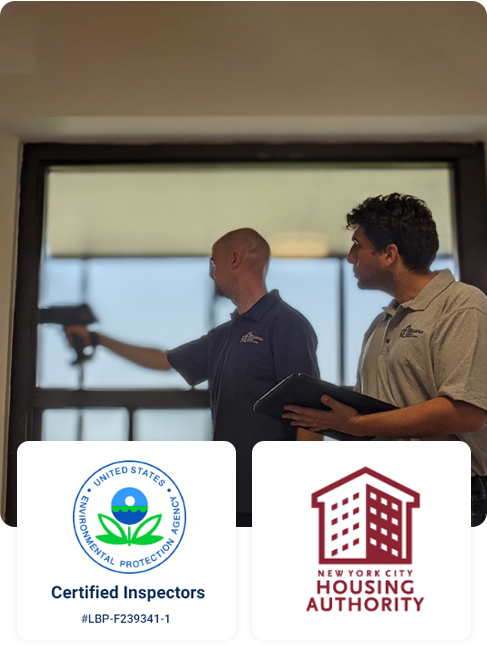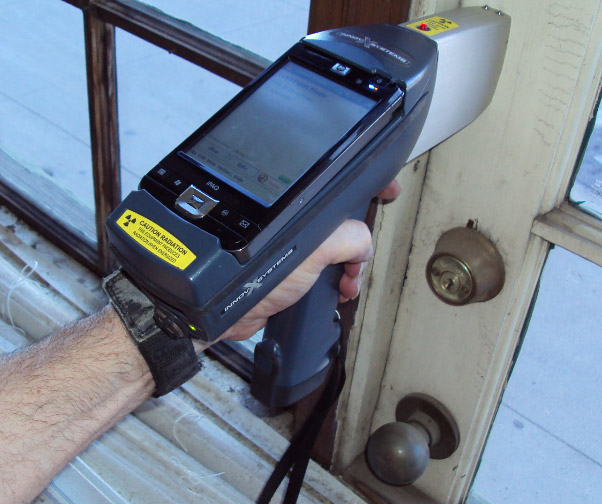NYC Lead Paint Removal Company-- Ensuring Safe and Lawful Conformity
Wiki Article
Comprehensive Overview on Effective Lead Infraction Elimination Methods
In the world of environmental safety and security, addressing lead offenses requires a precise and structured approach. This extensive overview starts by highlighting the important preliminary steps of identifying lead hazards via advanced analysis and screening approaches. The guide elaborates on the value of sticking to strict safety procedures during the removal process, including the use of correct PPE and separating impacted locations.Recognizing Lead Hazards
Identifying lead risks is an essential very first action in alleviating the risks associated with lead direct exposure. Lead, a hazardous metal, can be existing in numerous ecological mediums, consisting of paint, dirt, water, and dust.The preliminary phase in determining lead hazards includes recognizing common lead resources within the built setting. Frameworks constructed before 1978 are especially at risk due to the widespread usage of lead-based paint throughout that period. Additionally, dirt contamination can happen from deteriorating outside paint, industrial discharges, or historical use leaded gasoline.
An additional significant source is lead piping and pipes components, which can seep lead right into drinking water. Consumer items such as playthings, porcelains, and imported products might likewise consist of dangerous lead levels. Especially, job-related environments and leisure activities including lead can track pollutants right into homes.
Evaluation and Testing
When attending to lead hazards, reliable evaluation and testing are critical. This essential action ensures the identification and metrology of lead existence, therefore guiding succeeding remediation initiatives. Initial analysis usually includes a visual assessment to recognize possible lead resources, such as weakening paint or infected dust. This is matched by more rigorous screening methods to ascertain the level of contamination.
Dirt clean sampling is an additional vital strategy, specifically in residential setups. By accumulating examples from floors, windowsills, and other surfaces, this technique offers insights right into possible direct exposure risks. Additionally, dirt testing around building perimeters is vital to detect lead contamination that can pose risks, specifically to children.
Safe Elimination Treatments
Upon completing complete analysis and testing, executing secure removal treatments is the next important stage in resolving lead risks. This process ensures that lead-contaminated materials are properly and securely removed, decreasing risk to both employees and locals. The primary step entails separating the afflicted location using plastic sheet and appropriate securing strategies to stop the spread of lead dust.Workers must don ideal personal safety equipment (PPE), consisting of respirators, gloves, and disposable coveralls, to mitigate exposure. Employing specialized tools and damp techniques, such as damp fining sand or utilizing HEPA-filtered vacuum cleaners, decreases the diffusion of lead fragments. It is go to my blog important to stay clear of dry sanding or unpleasant blasting, as these methods can generate dangerous lead dirt.
Waste disposal is another important element; all polluted products have to be securely bagged and labeled according to EPA and regional policies. Additionally, extensive cleansing of the workspace with HEPA vacuums and wet official source wiping makes certain the removal of residual lead particles.
Post-Removal Confirmation

Confirmation of successful lead removal, known as post-removal confirmation, is imperative to make sure the safety and habitability of the remediated area. This inspection ensures that all well-known resources of lead have actually been attended to and that no noticeable signs of contamination remain.
Complying with the aesthetic examination, environmental tasting is carried out. This includes collecting dust, soil, and in some cases water examples from the remediated area. Approved labs examine these samples to measure lead degrees, guaranteeing they fall below the security thresholds developed by regulative bodies such as the Epa (EPA)
On top of that, air top quality testing might be performed to discover air-borne lead fragments, specifically in instances where substantial lead-based paint elimination or renovation has taken place. The results of these tests offer quantitative data confirming that the lead levels are within acceptable limitations.
Ultimately, post-removal verification acts as a critical checkpoint, validating the efficiency of the lead abatement initiatives and guarding the health and wellness of occupants and site visitors.
Safety Nets and Maintenance

An essential preventive step consists of the usage of lead-safe licensed professionals for any type of remodelling, repair, or painting tasks. These specialists are learnt practices that lessen lead dirt and particles. In addition, maintaining painted surfaces to prevent damaging or peeling off is important, as deteriorating paint can launch lead bits into the environment.
Educational initiatives targeting homeowner and occupants relating to the dangers of lead and the significance of reporting any potential risks can further enhance preventive initiatives. Routine cleaning using HEPA vacuums and damp wiping techniques can considerably reduce lead dirt build-up.
Final Thought
In summary, effective lead violation elimination requires a thorough method incorporating detailed analysis, precise screening, and strict elimination treatments. Making certain security via appropriate seclusion and individual safety equipment continues to be critical. Post-removal confirmation by means of ecological tasting and air quality testing substantiates compliance with well-known Related Site safety criteria. Continuous assessments and maintenance are vital to reduce future lead threats, therefore guarding public health and making sure continual conformity with regulative demands.Report this wiki page